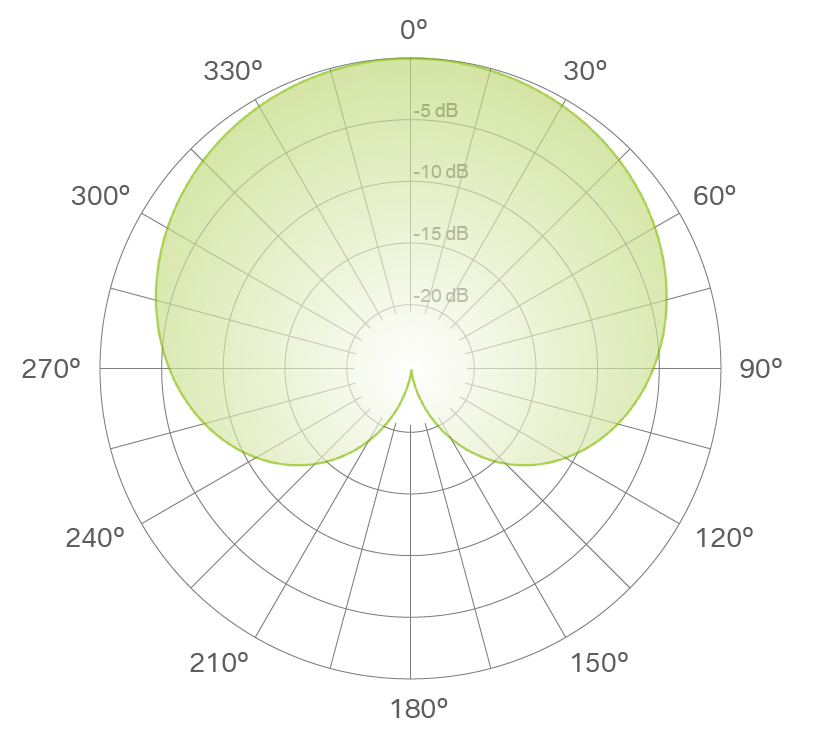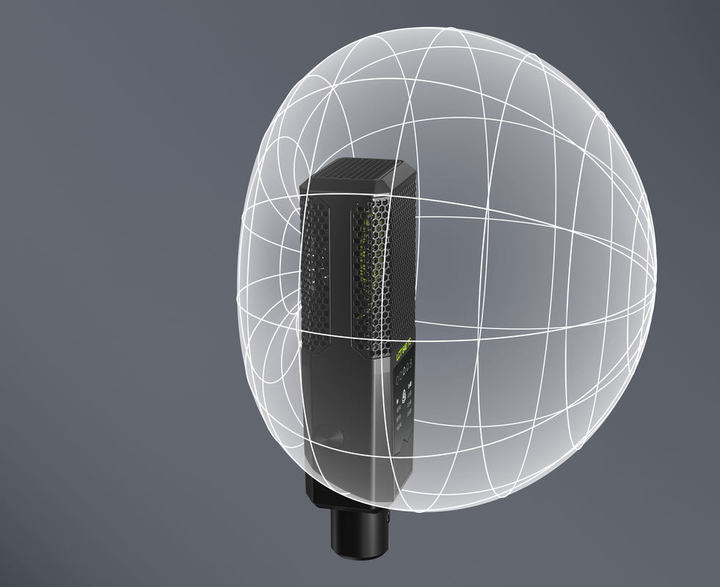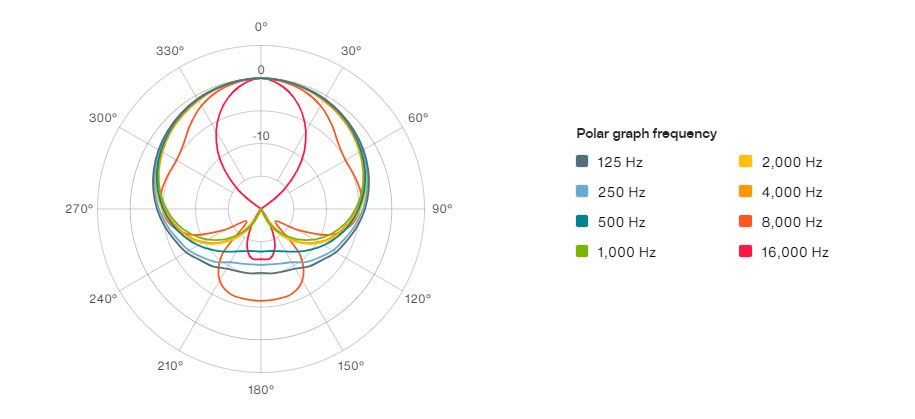
Blog
True love for great sound unites us.
Blog
True love for great sound unites us.
If you have ever used a microphone, chances are high that it was a cardioid polar pattern microphone. It is the most used polar pattern in microphones.
But what is it exactly, and why is it so popular? In this blog post, we will take a detailed look at cardioid polar patterns. As a microphone manufacturer, we have extensive knowledge of polar patterns and invite you to dive into the heart-shaped world of cardioid polar patterns.
Before we can understand a cardioid polar pattern, we need to understand polar patterns in general.
A polar pattern defines how much audio signal a microphone will pick up from different directions.
For example, the cardioid polar pattern is most sensitive in the front and least sensitive in the back.
Check out the microphone polar patterns blog to learn more about all polar patterns.
As mentioned before, the cardioid polar pattern is the most common of all polar patterns. It is most sensitive in the front and least sensitive in the back.
In the diagram below, you can see a cardioid polar pattern. The green area is where the microphone picks up sound. 0° represents the front of the microphone, and 180° is directly behind the microphone.
If the back is 20 dB less sensitive than the front, the back of the diaphragm has 1/10th of the voltage. So, the sound coming from the back is 75% less audible in your signal.

LEWITT cardioid studio condenser microphones
Its shape makes the cardioid pattern very useful for recording sound sources directly in front of the microphone while rejecting sound from the back.
Cardioid is the most used polar pattern for a variety of applications:
Most applications are recorded with a cardioid polar pattern.
Another reason so many microphones have a cardioid polar pattern is that it is the easiest polar pattern to produce.

Now that you know so much about the cardioid polar pattern, it's time to hear how it sounds as well.
For this purpose, I have prepared a few sound samples below. Each sound sample is available in an omnidirectional and cardioid polar pattern.
An omnidirectional, or omni for short, polar pattern is sensitive to all directions. You will hear the difference between an omni and a cardioid pattern quite clearly in some sound samples and a bit less in others. This will give you a good idea of how much a polar pattern can influence your recording.
These sound samples were recorded with the LCT 640 TS microphone. It has the unique capability to change the polar pattern after recording. All takes in the sound sample are exactly the same; only the polar pattern is different. If you want to try out how this works, check out the download pack in the blog "Change the polar pattern after recording".
Another acoustic characteristic of the cardioid polar pattern is the proximity effect. The proximity effect is a phenomenon where a directional microphone (like a cardioid mic) boosts the low-frequency response as the sound source gets closer to the microphone. This effect can make voices and instruments sound richer and bassier when they are near the mic.
From looking at the polar pattern graphics, you might think that a polar pattern is fixed across the frequency spectrum. But you would be wrong.
What you see in the standard polar graphs is only the sensitivity of the microphone at 1kHz.
But depending on the frequency, the polar pattern changes.
Below, you can see the polar pattern of the LCT 640 TS microphone throughout different frequencies.

Check out the interactive polar pattern diagram on the product page!
This information will probably not change how most of us record or use different polar patterns. But it explains much better why microphones can sound so different when it comes to different pickup angles.
Most other microphone manufacturers also do not show frequency-dependent polar graphs. As far as I know, we are the only one. You can find the graphs on all of our studio condenser microphones.
When you use a microphone to record vocals, position the back of the microphone towards the computer to minimize fan noises, mouse clicks, or other sounds the computer might make.
For drum recording, you can also put the back of the microphones toward other drum shells to minimize bleeding. You could point the back of your snare mic towards the hi-hat, for example.
Now that you know how to use the cardioid polar pattern to your advantage, I'm sure that more situations will come to your mind while recording.